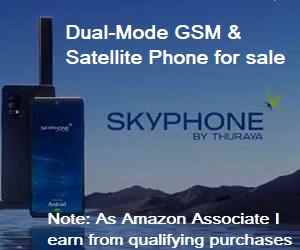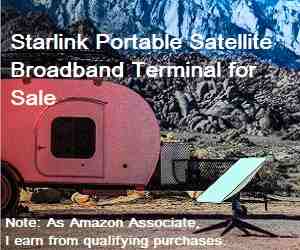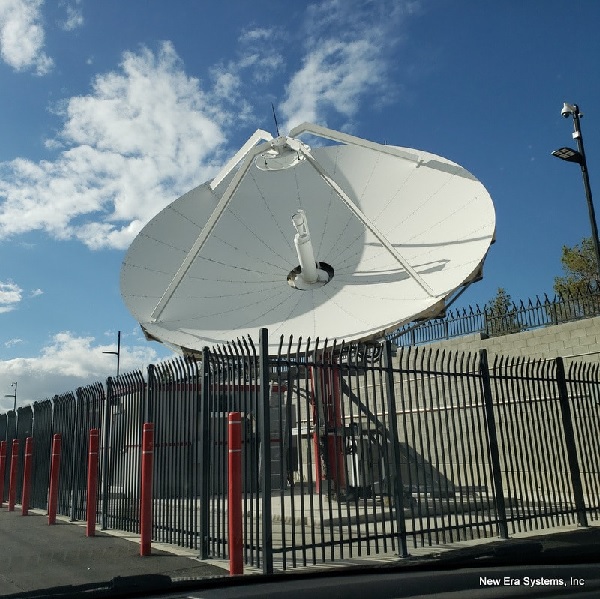Satellite Internet Forum.
Welcome, Guest. Forum rules.To search this site click here > SATSIG search
| Home Login Register |
| › Recent Posts |
| 1 | VSAT technology and installation / Satellite dish installations - pictures and descriptions / Antenna Pointing Accuracy in Satellite Communication on: Today at 8:49am |
||
|
|
|||
Antenna Pointing Accuracy – Definition, Measurement, and Calculation In the technical specifications of satellite communication antennas, the parameter antenna pointing accuracy is almost always specified. Typically, it is expressed as: Antenna Pointing Accuracy ≤ 1/10 of the Half-Power Beamwidth (HPBW) What Is Antenna Pointing Accuracy? Basic Concepts Before discussing pointing accuracy, it is necessary to understand several related fundamental concepts. • Beamwidth Beamwidth usually refers to the Half-Power Beamwidth (HPBW) of an antenna. It is defined as the angular separation between the two directions on either side of the main beam where the antenna gain drops by 3 dB from its maximum value (i.e., where the radiated or received power is reduced to half of the peak).  Beamwidth is the most important reference when evaluating pointing accuracy. The narrower the beamwidth, the higher the requirement for antenna pointing accuracy. • Beam Center The beam center is the direction in which the antenna radiates or receives maximum power, corresponding to the maximum antenna gain. All pointing errors are measured relative to this direction. • Pointing Error Pointing error is the angular difference, at any given moment, between the antenna’s actual pointing direction and the desired target direction. • Pointing Accuracy Pointing accuracy describes the deviation between the actual pointing direction of the antenna main beam and the desired pointing direction (the target satellite). Pointing accuracy is not an instantaneous value, but a statistical quantity evaluated over a specified time period. It is commonly expressed as a root mean square (RMS) error. In essence, pointing accuracy measures how accurately an antenna can point toward a theoretically calculated direction (in this case, the satellite’s theoretical azimuth and elevation angles) under open-loop conditions. In one sentence: pointing accuracy indicates how precisely the antenna can be aimed at the target. The main factors affecting pointing accuracy include: Antenna installation accuracy (base leveling, azimuth reference) Calibration accuracy Resolution of encoders or sensors Structural deformation under gravity and steady wind load • Tracking Accuracy Tracking accuracy refers to the performance of the antenna’s automatic servo control system in maintaining alignment with a moving target (such as a satellite) during operation. It measures the error between the actual beam center and the satellite’s real-time position during closed-loop tracking. Factors affecting tracking accuracy include: Servo system response speed Control algorithms Beacon receiver sensitivity System latency Dynamic wind loads (gust-induced vibration) Mechanical backlash in the drive system Why Is Pointing Accuracy Important? • Maximizing Antenna Gain and Ensuring Link Quality Using the most common parabolic antenna in satellite communications as an example: A parabolic reflector achieves high gain by concentrating electromagnetic energy into the main beam. If the beam center is not precisely aligned with the satellite, the transmitted or received signal deviates from the region of maximum gain, resulting in reduced signal strength (carrier-to-noise ratio, C/N) and degraded communication quality, potentially even causing link outages. For example: For an antenna with an HPBW of 1°, a pointing error of 0.5° may result in a gain loss exceeding 3 dB. • Avoiding Adjacent Satellite Interference Geostationary orbit (GEO) orbital resources are extremely limited. The angular separation between adjacent satellites is typically only 1° to 3°. If a ground antenna is inaccurately pointed, its sidelobes may illuminate neighboring satellites, causing uplink interference. Uplink interference degrades the performance of adjacent satellite systems It may also lead to serious international coordination issues or frequency disputes Therefore, ITU-R Recommendation S.734-1 explicitly states: For systems operating above 10 GHz, antenna pointing accuracy should be better than one-tenth of the half-power beamwidth. This requirement is widely adopted across the industry. Sources of Antenna Pointing Errors The causes of antenna pointing errors can be classified into three categories: 1. Static Errors Caused by antenna structure, installation, and environmental conditions, including: Gravitational deformation: changes in reflector shape and feed position under gravity at different elevation angles Installation misalignment: deviation between antenna azimuth/elevation reference zero points and true north or the horizontal plane Thermal deformation: uneven solar heating causing differential thermal expansion 2. Dynamic Errors Mainly caused by external dynamic loads: Wind load: the dominant source of dynamic pointing error, inducing structural deflection and oscillation Mechanical vibration and transient disturbances during rotation 3. Other Error Sources Atmospheric refraction: bending of electromagnetic wave paths through the atmosphere Satellite position error: inaccuracies in ephemeris data leading to satellite position prediction errors Measurement and Calculation of Pointing Accuracy For satellite communication ground stations, the most commonly used and practical method is the satellite beacon method. Measurement Procedure 1. Satellite Selection Select a stable in-orbit geostationary communication satellite transmitting a continuous-wave (CW), unmodulated beacon signal. The satellite’s orbital longitude is precisely known. 2. Calculation of Theoretical Pointing Angles Based on: Satellite orbital longitude Ground antenna location (latitude and longitude obtained via GPS) Calculate the theoretical azimuth (Az₀) and elevation (El₀) angles of the antenna. 3. Initial Antenna Pointing via the Servo System Based on the antenna’s GPS-determined location, the servo control system drives the antenna to the calculated target angles. The positioning accuracy of the control system has a direct impact on the initial pointing accuracy. 4. Scanning Perform a small-area scan around the target direction using: Cross-scan Conical scan 5. Signal Recording Record the received beacon signal power during the scan. 6. Peak Detection Identify the azimuth (Azmax) and elevation (Elmax) corresponding to the maximum received beacon power. This point represents the antenna’s actual electrical pointing direction. 7. Deviation Calculation Compute the difference between the measured peak point (Azmax, Elmax) and the theoretical values (Az₀, El₀).  Pointing Accuracy Calculation Practical Data Processing Steps Data Acquisition During the scan, record a set of data pointsi: Azᵢ, Elᵢ: actual azimuth and elevation angles (read from axis encoders) Pᵢ: received beacon signal power at (Azᵢ, Elᵢ) Electrical Axis Determination Perform surface fitting (e.g., two-dimensional Gaussian fitting) on the collected (Az, El, P) data The peak of the fitted power surface corresponds to the antenna’s electrical axis pointing direction (Az_peak, El_peak) Error Calculation Azimuth error: ΔAz = Az_peak − Az₀ Elevation error: ΔEl = El_peak − El₀ Az₀ and El₀ represent the theoretical azimuth and elevation angles derived from the ground antenna location and the accurate orbital coordinates of the beacon satellite. Pointing Accuracy Calculation The total pointing accuracy is commonly calculated as:F_Total = sqrt( (ΔAz * cos(El))² + ΔEl² ) |
|||
| 2 | VSAT technology and installation / Dish pointing and alignment / Development Trends of Flyaway Satellite Communication Antennas on: Dec 17th, 2025 at 1:33am |
||
|
|
|||
Satellite communication system terminals can be classified by installation type into fixed, vehicle-mounted, maritime, airborne, and Flyaway stations. Among them, Flyaway satellite communication earth stations have gained wide application in disaster relief, exploration, field investigation, and emergency response due to their convenience, rapid deployment, flexibility, simple structure, compact size, and lightweight design. Compared with handheld satellite terminals, Flyaway stations also offer significantly stronger communication capabilities. Characteristics of Flyaway Antenna Systems Unaffected by geographical constraints or limited deployment space Small size and lightweight, easy to carry in a backpack or flight case Low power consumption with advanced power-management design for harsh field environments Rapid deployment and fast communication link setup Supports integrated voice, data, and IP services, enabling critical communication for disaster relief and emergency operations Typical Use Cases Disaster Relief: When disasters strike and terrestrial communication infrastructure is severely damaged, rescue teams rely on Flyawaystations to reach the site, report real-time conditions to the command center, and receive instructions and intelligence. Exploration and Field Surveys: Mobile teams often operate in remote areas with no fixed communication points. Flyawaystations enable continuous connectivity, allowing users to receive weather, geological data, and transmit local information. Emergency Response: Flyawaystations support rapid deployment of temporary satellite networks for beyond-line-of-sight communications during unexpected incidents. Flyaway stations are ideal for temporary communication needs or regularly changing deployment locations where terrestrial networks are unavailable. User requirements drive the design of Flyaway solutions, including service types, data rates, operating environments, and carrying formats. Carrying Methods: Backpack type: weight should be within 20 kg for single-person carry Case type: weight per case should be within 40 kg  Development Trends of Flyaway Satellite Communication Earth Stations As users demand lighter equipment, higher data rates, lower cost, and easier operation, the development of domestic Flyaway satellite-communication terminals is moving toward miniaturization, multi-band capability, and modularization. 1. Miniaturization With increasing component integration and enhanced processing power, the size and weight of RF modules and terminals will continue to decrease. 2. Integrated Design Antenna, RF, and terminal equipment are increasingly designed as unified systems. Small terminals can be integrated at the antenna base, and low-power RF modules can be directly mounted on the antenna. 3. Multi-Band Capability As satellite applications expand and lower-frequency resources become saturated, systems are shifting toward higher-frequency bands. Flyaway stations with multi-band operation better accommodate user needs. For example, the Harris 1.3 m Seeker terminal supports X-, Ku-, and Ka-band communications. 4. Modularization With better integration, equipment can be designed as modular units—for example, RF modules with different power levels or frequency bands, and modems supporting various data rates and waveforms. 5. Easy Assembly and Disassembly Higher integration simplifies installation. Complex subsystems—such as feed networks and RF components—can be preassembled as a single unit, reducing deployment time and technical difficulty. 6. Simplified Operation Advancements in space technology, components, and computing have improved system performance while simplifying user operation. Flyaway stations often require only a few basic parameters to join the network, with the rest configured automatically by the satellite hub. The system becomes more complex internally so that user operation becomes easier. 7. Modular Service Access Terminals can be equipped with modular service-access units based on user needs, reducing terminal size. Flyaway stations mainly support IP data services while also accommodating voice and video. Flyaway equipment continues to evolve toward modular, lightweight designs, enabling easier transport and faster deployment. The expansion of available frequency bands provides users with more satellite-resource options, making satellite communication increasingly accessible. With growing communication demands—especially in temporary and emergency scenarios—Flyaway stations offer high data rates, low cost, and multi-service transmission advantages. They are expected to enjoy strong market prospects. With continuous advances in satellite-communication technology, Flyaway stations are becoming more capable and convenient, making them a key direction of future application development. Antesky’s Innovations At Antesky, we continue optimizing our Flyaway-station products based on customer requirements. For example, we offer multi-band Flyaway antenna systems, designed with a simplified and user-friendly feed architecture. Users can easily replace feeds—typically with just two or four screws—making band switching faster and more efficient. For detailed information, please refer to the instructions below for our 2.4 m Flyaway antenna with multi-feed support. Antesky can customize replacable feed according your requirements, and bellow is C circular pol feed , C linear pol feed, X circular pol feed and Ku linear pol feed for example:  C1 C2 X Ku Feed Antesky 2.4m Automatic Flyaway Antenna is packed in 7 boxes:  2.4m Automatic Flyaway Antenna Packing Details Antesky 2.4m Automatic Flyaway Antenna installtation steps:  2.4m Automatic Flyaway Antenna installtation steps   If you are interested in Flyaway Antennas, welcome to contact us directly at sales@antesky.com once you are looking for such type of flyaway antenna. 0.75meter to 2.4meter are available in stock and can ship out soon. |
|||
| 3 | VSAT technology and installation / Hub and VSAT satellite equipment for sale and wanted / For sale: 4.5M Receive antennas, also a motorised Vertex 7.3m Ku on: Dec 11th, 2025 at 1:23pm |
||
|
|
|||
| 4 | VSAT technology and installation / Satellite dish installations - pictures and descriptions / Analysis of the Relationship Between Low Earth Orbit (LEO) Satellites and XY-Axis Satellite Antennas on: Nov 26th, 2025 at 7:27am |
||
|
|
|||
1. Characteristics and Communication Requirements of LEO Satellites Low Earth Orbit (LEO) satellites operate at altitudes of 300–1500 km. Their key characteristics include: Short orbital period: approximately 1.5 hours per orbit; Limited coverage: each satellite covers a small area; High relative speed: approximately 7.8 km/s. These characteristics present the following challenges for ground station communications with LEO satellites: Short visibility window: a single LEO satellite is visible to a ground station for only about 10 minutes (e.g., a 500 km altitude satellite has a sub-satellite track covering ~3000 km), requiring rapid acquisition and tracking; Signal attenuation: although the distance to the ground is short (300–1500 km), a high-gain directional antenna is still required to ensure sufficient signal strength; High dynamic pointing requirements: the satellite’s high speed necessitates real-time beam adjustments to maintain alignment with the satellite. 2. Definition and Function of XY-Axis Satellite Antennas An XY-axis satellite antenna (also called a dual-axis antenna) adjusts the beam direction via azimuth (X-axis) and elevation (Y-axis) rotation. Its core function is dynamic satellite tracking, ensuring the beam always points to the target satellite, maintaining communication stability in high-dynamic scenarios. Compared with traditional single-axis antennas, XY-axis antennas offer: Higher pointing accuracy: independent azimuth and elevation adjustment to track satellite movement in the XY plane; Faster tracking speed: dual-axis linkage responds quickly to satellite position changes, meeting the needs of high-speed LEO satellites; Wider coverage: covers the entire satellite visibility window, avoiding blind spots of single-axis antennas. 3. Synergy Between LEO Satellites and XY-Axis Satellite Antennas XY-axis satellite antennas are key ground terminal devices for LEO satellite communication systems, designed specifically around LEO characteristics: Dynamic tracking: adjusts the azimuth (X-axis) for east-west direction and elevation (Y-axis) for north-south direction. Ground stations can calculate future azimuth and elevation sequences based on satellite ephemerides (e.g., TLE data) to drive the antenna along a pre-defined trajectory, ensuring the beam always points to the satellite. High-precision pointing: although LEO satellites are close, high-gain directional antennas are still required. XY-axis antennas use high-precision angle encoding (resolver precision ≤5”) and system error correction (e.g., gravity deformation, non-level base) to control pointing error within 10”, meeting Ka-band narrow beamwidth requirements and preventing signal degradation. Multi-satellite switching: LEO constellations (e.g., Starlink, OneWeb) require multiple satellites to provide continuous coverage. XY-axis antennas can quickly switch to the next satellite to ensure uninterrupted communication. Adaptation to LEO terminal requirements: user terminals require compactness and easy installation. XY-axis antennas can be integrated into vehicle-mounted, airborne, or fixed terminals. For example, OneWeb terminals adopt XY-axis phased array antennas that integrate satellite modem, LTE/3G, and Wi-Fi, providing convenient Internet access for users. 4. Key Technologies of XY-Axis Satellite Antennas To meet LEO satellites communication requirements, XY-axis antennas incorporate: High-precision angle encoding: resolver + RDC converter for pointing accuracy within 10”; System error correction: calibration of encoder zero position, gravity deformation, and non-orthogonality of azimuth/elevation axes; Composite control: PID algorithm + feedforward compensation to enhance dynamic tracking performance; Rapid acquisition and continuous tracking: “prediction + correction” closed-loop process for fast satellite signal acquisition and continuous tracking. 5. Optimization of Antesky 1.8 m / 2.4 m XY-Axis Parabolic Antenna Terminals Antesky 1.8 m and 2.4 m XY-axis parabolic antennas (fixed or transportable) are specially optimized in structure, control accuracy, and integration, fully meeting LEO terminal requirements: High-gain parabolic structure Lightweight, high-rigidity reflector with precision machining to ensure surface accuracy. Excellent beam performance across multiple bands (S, X, Ku, Ka) ensures high SNR and low BER during fast satellite passes. XY dual-axis drive system Azimuth (X-axis) + elevation (Y-axis) structure with high-speed servo motors and high-resolution resolvers, covering ±180° azimuth and 0–90° elevation, enabling blind-spot-free tracking. Modular and lightweight design Servo control units, RF front-end, and reflector modules are modular and combinable. Carbon-fiber reflectors + aluminum alloy support reduce overall weight by ~30% compared to traditional antennas, facilitating mobile terminals and field deployment. Intelligent control and remote operation High-performance ACU supports automatic acquisition, closed-loop tracking, and ephemeris-based predictive control. Multiple interfaces (Ethernet, serial, CAN) enable system integration, remote monitoring, status reporting, and self-diagnosis. Seamless multi-satellite switching Built-in satellite task management module calculates and switches to the next satellite before current signal fades, ensuring uninterrupted links and enhanced LEO satellites constellation service continuity.     Contact Us Thank you for your interest in our XY-axis parabolic satellite antennas,which is mainly used for tracking LEO satellites. For more information on products, technical specifications, or customized solutions, please contact: email: sales@antesky.com |
|||
| 5 | VSAT technology and installation / Dish pointing and alignment / Adjustment of Satellite Communication Antenna Polarization Angle on: Nov 26th, 2025 at 7:05am |
||
|
|
|||
Adjustment of Satellite Communication Antenna Polarization Angle: Linear Polarization and Circular Polarization How to Adjust Horizontal/Vertical Polarization Angles Adjustment Method for Linear-Polarization Signals: Ground Fixed Stations and SOTM Terminals For linear-polarized signals, technicians typically adjust the polarization angle after completing azimuth and elevation alignment. Once the antenna is accurately pointed, the polarization adjustment can begin. First, based on the satellite’s orbital position and the geographic coordinates of the ground antenna, the azimuth, elevation, and polarization angle are calculated. After obtaining the required polarization angle, the technician rotates the antenna feed—most commonly by rotating the LNB or the feed assembly—to ensure that the antenna’s receive/transmit polarization is properly aligned with the satellite’s incoming signal. This rotation aligns the ground antenna’s horizontal or vertical polarization with the satellite’s polarization orientation, minimizing cross-polarization interference and maximizing link performance. If the LNB bracket includes a polarization scale, the technician can simply rotate the LNB to the calculated theoretical polarization angle indicated on the scale. In addition, many modern fixed ground stations and SOTM antennas use automatic satellite acquisition. The antenna control unit (ACU) drives a motor to automatically rotate the feed (LNB) to the required theoretical polarization angle. There is also a manual polarization adjustment method for rotating the antenna feed (LNB). For example: Suppose a satellite transmits a horizontal-polarization signal at 12250.2 MHz and a vertical-polarization signal at 12250 MHz, and the ground antenna needs to align to the horizontal-polarization signal. Horizontal and vertical polarizations are orthogonal to each other in space. A well-designed antenna optimized for horizontal polarization has extremely low sensitivity to the vertical-polarized wave. When the antenna is perfectly aligned to horizontal polarization, its response to the vertical-polarized signal is theoretically zero. Therefore, the goal of polarization adjustment is to: Maximize the received power of the desired signal (12250.2 MHz, horizontal polarization). Minimize the power of the undesired orthogonal signal (12250 MHz, vertical polarization)—ideally making it disappear on the spectrum analyzer. When these conditions are met, the antenna is perfectly aligned with the horizontal-polarization signal while achieving maximum suppression of the orthogonal vertical-polarization signal. Manual Polarization Adjustment Procedure for Ground Station Antennas:  · Preparation and Calculation: Input the local location and satellite longitude, and calculate the theoretical polarization angle. · Equipment Connection and Setup: Properly connect the spectrum analyzer to the LNB output, and configure it to clearly observe the target signal as well as potential interference signals. · Azimuth and Elevation Adjustment: Adjust the antenna’s azimuth and elevation angles so that the antenna points toward the satellite. · Polarization Angle Adjustment: Rotate the antenna feed (LNB) to the theoretical polarization angle to initially acquire the signal. · Fine-Tuning Optimization (Core Loop): This is a precise and iterative process. By slightly rotating the LNB and monitoring the spectrum analyzer in real time, maximize the target signal power while minimizing the interference signal power to find the optimal peak point. During manual polarization adjustment, continuously monitor the power of the horizontally polarized signal (desired signal) and the orthogonal vertically polarized signal (interference), and calculate the cross-polarization discrimination (XPD).  How is the antenna polarization angle adjusted for circularly polarized signals? In fact, circularly polarized antennas do not require polarization angle adjustment; only the polarization state needs to be selected. Taking a Ka-band circularly polarized satellite communication portable station as an example: The antenna of the portable station has only two polarization states: 0° and 180°. The feed (OMT or waveguide switch) is designed to switch between RHCP (right-hand circular polarization) and LHCP (left-hand circular polarization) operation modes. This is a simple two-option configuration rather than a finely adjustable angle. During satellite acquisition, the user simply switches the feed between 0° and 180° manually; the antenna’s polarization does not require motorized servo adjustment. It is important to note that if the circular polarization sense is incorrect (for example, using an LHCP antenna to receive an RHCP signal), signal loss can reach 25–30 dB, causing the communication link to fail completely. During commissioning, only one of the two states (0° or 180°) can establish a valid connection, while the other will result in almost no signal.  📡 Why is the Antesky Flyaway Antenna Easier to Align Polarization in Engineering Applications? Antesky 1.0-2.4 Meter Flyaway antenna is engineered with practical field deployment requirements in mind, making polarization alignment significantly more efficient: • Precise Feed Polarization Scale Antesky 1.0-2.4 Meter Flyaway antenna: The linear-polarized feed is equipped with a ±90° mechanical scale, perfectly matching the engineering workflow described in this article—allowing technicians to “coarsely set the polarization angle according to the theoretical value.”  • Optional Motorized Polarization Adjustment (for Fixed or Transportable Stations) For users who need quicker setup, remote operation, or reliable repeatability (such as government, broadcast, emergency communications, or fixed ground stations), Antesky antenna can be configured with: A polarization adjustment motor Controller-based automatic positioning to the specified polarization angle  • 0°/180° Quick-Switch Circular Polarization Feed For circular-polarized configurations, the antenna uses a feed design that supports instant switching between RHCP and LHCP.  • High Cross-Polarization Isolation The feed system is optimized to provide excellent cross-polarization isolation, ensuring strong co-pol performance while suppressing unwanted cross-pol signals—matching the XPD requirements outlined earlier in the article. Conclusion This article systematically elaborates on the theoretical foundations and practical methods for adjusting the polarization angle of satellite communication antennas. By analyzing the characteristics of linear and circular polarization in different application scenarios, we recognize the critical impact of polarization alignment on communication quality. Linear polarization systems require precise polarization angle adjustment to ensure maximum signal reception and interference suppression, whereas circular polarization systems simplify the installation process through rotational direction matching. |
|||
| 6 | Anything else / General and other topics / Re: Help: Can you ping and tracert to me at satsig.net and 81.130.171.187 on: Nov 25th, 2025 at 5:36pm |
||
|
|
|||
Many thanks for doing the tracert and sending the results. From my web site logs it is clear that many people from far-away places can get to this web site. However, multisource remote tracert using https://tools.keycdn.com/traceroute shows many places unable to get past IP address 217.32.25.100 or 217.32.25.101 towards here at 81.130.171.187 Any ideas welcome ... Best regards, Eric. |
|||
| 7 | VSAT technology and installation / Hub and VSAT satellite equipment for sale and wanted / For sale: Terrasat 100W Ku-Band IBUC-R on: Nov 25th, 2025 at 2:58pm |
||
|
|
|||
We have a Used Terrasat 100W EKu-Band IBUC-R (Model: IBR137145-2NA100WW) available in excellent condition, sourced directly from a Fortune 500 company that is an authorized Terrasat distributor. The unit has been fully inspected and tested by our satellite RF engineers. 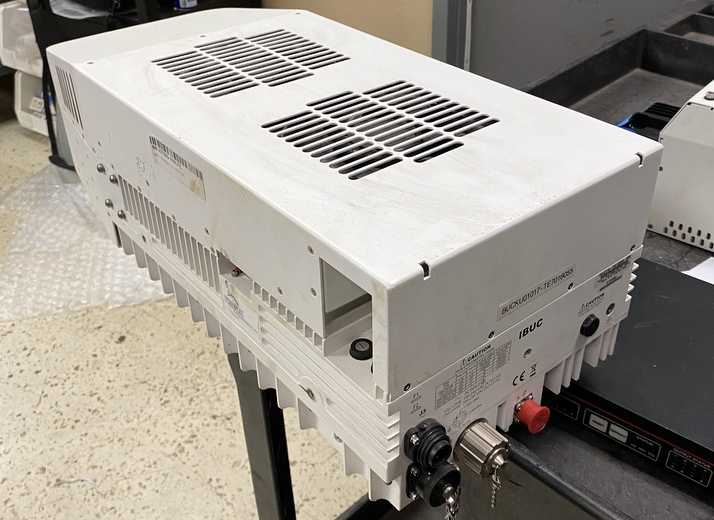 What’s Included Internal 10 MHz reference Original Terrasat factory packaging Full test data M&C Ethernet cable AC power cable This model originally retailed for around $30,000, making it a premium, high-performance Ku-band uplink amplifier suitable for: Teleports & gateway uplinks Broadcast & SNG networks Enterprise VSAT platforms Maritime & offshore applications The Terrasat IBUC-R series is known for outstanding linearity, stability, and reliability, with integrated upconversion and full SNMP/Ethernet monitoring for complete control in the field. If you’d like photos, pricing, or shipping details, feel free to reply anytime. Kind regards, Neil Sales Satcom Solutions Inc. Cell: 732-810-9919 Skype: satcomsolutionsinc Web: https://satcomsolutions.org/ |
|||
| 8 | Anything else / General and other topics / Re: Help: Can you ping and tracert to me at satsig.net and 81.130.171.187 on: Nov 22nd, 2025 at 7:50pm |
||
|
|
|||
Hi Eric, There are some online tools you can use like this one: https://dnschecker.org/online-traceroute.php But here are the results from my side: Pinging satsig.net [81.130.171.187] with 32 bytes of data: Request timed out. Request timed out. Request timed out. Request timed out. Ping statistics for 81.130.171.187: Packets: Sent = 4, Received = 0, Lost = 4 (100% loss), tracert satsig.net Tracing route to satsig.net [81.130.171.187] over a maximum of 30 hops: 1 4 ms * 2 ms RTK_GW.bbrouter [192.168.10.1] 2 9 ms 4 ms 5 ms 100.65.255.255 3 5 ms 6 ms 5 ms 10.7.48.33 4 9 ms 6 ms 8 ms 10.7.49.45 5 * * 48 ms 63-220-193-217.static.as3491.net [63.220.193.217] 6 67 ms 66 ms 67 ms BE42.br02.frf08.as3491.net [63.218.14.54] 7 68 ms 69 ms 66 ms 166-49-154-246.gia.bt.net [166.49.154.246] 8 73 ms 72 ms 78 ms t2c3-et-9-1-3.uk-lon1.gia.bt.net [166.49.195.225] 9 74 ms 72 ms 75 ms 166-49-214-195.gia.bt.net [166.49.214.195] 10 88 ms 71 ms 76 ms core2-hu0-3-0-0.southbank.ukcore.bt.net [109.159.252.91] 11 76 ms 75 ms 72 ms 213.121.192.133 12 75 ms 73 ms 73 ms 217.32.240.92 13 75 ms 74 ms 73 ms 217.32.240.16 14 75 ms 76 ms 73 ms 217.32.25.101 15 * * * Request timed out. 16 * * * Request timed out. 17 * * * Request timed out. 18 * * * Request timed out. 19 * * * Request timed out. 20 * * * Request timed out. 21 * * * Request timed out. 22 * * * Request timed out. 23 * * * Request timed out. 24 * * * Request timed out. 25 * * * Request timed out. 26 * * * Request timed out. 27 * * * Request timed out. 28 * * * Request timed out. 29 * * * Request timed out. 30 * * * Request timed out. Trace complete. Pinging 81.130.171.187 with 32 bytes of data: Request timed out. Request timed out. Request timed out. Request timed out. Ping statistics for 81.130.171.187: Packets: Sent = 4, Received = 0, Lost = 4 (100% loss), Tracing route to satsig.com [81.130.171.187] over a maximum of 30 hops: 1 4 ms 1 ms 4 ms RTK_GW.bbrouter [192.168.10.1] 2 6 ms 4 ms 6 ms 100.65.255.255 3 5 ms 6 ms 6 ms 10.7.48.33 4 32 ms 7 ms 5 ms 10.7.49.45 5 50 ms * * 63-220-193-217.static.as3491.net [63.220.193.217] 6 69 ms 67 ms 66 ms BE42.br02.frf08.as3491.net [63.218.14.54] 7 69 ms 70 ms 85 ms 166-49-154-246.gia.bt.net [166.49.154.246] 8 73 ms 72 ms 72 ms t2c3-et-9-1-3.uk-lon1.gia.bt.net [166.49.195.225] 9 74 ms 72 ms 74 ms 166-49-214-195.gia.bt.net [166.49.214.195] 10 75 ms 73 ms 72 ms core2-hu0-3-0-0.southbank.ukcore.bt.net [109.159.252.91] 11 73 ms 72 ms 72 ms 213.121.192.133 12 74 ms 73 ms 73 ms 217.32.240.92 13 75 ms 72 ms 72 ms 217.32.240.16 14 74 ms 74 ms 73 ms 217.32.25.101 15 * * * Request timed out. 16 * * * Request timed out. 17 * * * Request timed out. 18 * * * Request timed out. 19 * * * Request timed out. 20 * * * Request timed out. 21 * * * Request timed out. 22 * * * Request timed out. 23 * * * Request timed out. 24 * * * Request timed out. 25 * * * Request timed out. 26 * * * Request timed out. 27 * * * Request timed out. 28 * * * Request timed out. 29 * * * Request timed out. 30 * * * Request timed out. Trace complete. |
|||
| 9 | VSAT technology and installation / Hub and VSAT satellite equipment for sale and wanted / WTS Antenna Vertex 9.0M C-Band 4 Port - Jakarta Indonesia on: Nov 14th, 2025 at 9:20am |
||
|
|
|||
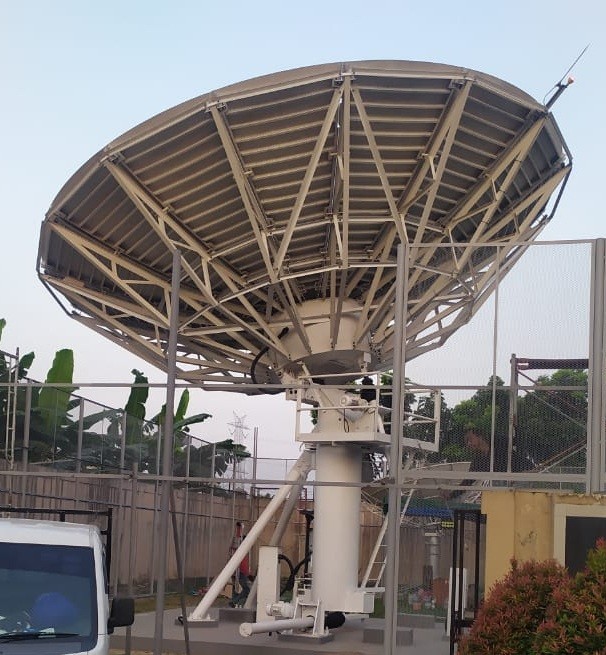 WTS Antenna Vertex 9.0 Meter Used Condition C-Band Range frequency 4-port TX RX Feed Kingpost Antenna Include Motor Azimuth, Elevation & Polarization include Controller Outdoor Custom only not included indoor controller IDU systems not included waveguide systems already used SES, Telkom, Nusantara1 Satellite unit already to packing, sending to you Location in Jakarta Indonesia Call & Whatsapp +6281281814325 we are support additional packing, shipping, installation |
|||
| 10 | Anything else / General and other topics / Help: Can you ping and tracert to me at satsig.net and 81.130.171.187 on: Nov 9th, 2025 at 2:56pm |
||
|
|
|||
Help: Can you please try ping and tracert to me at satsig.net and 81.130.171.187 Please copy the text results (highlight / control C in the black command prompt window) and send the results to me by email eric@satsig.net Thanks. Eric (forum admin) |
|||
Email me: eric@satsig.net
Powered by YaBB 2.5.2!
YaBB Forum Software © 2000-. All Rights Reserved.
Disclaimer, Terms of Use and Privacy Forum User Agreement Forum rules Cookie policy.
